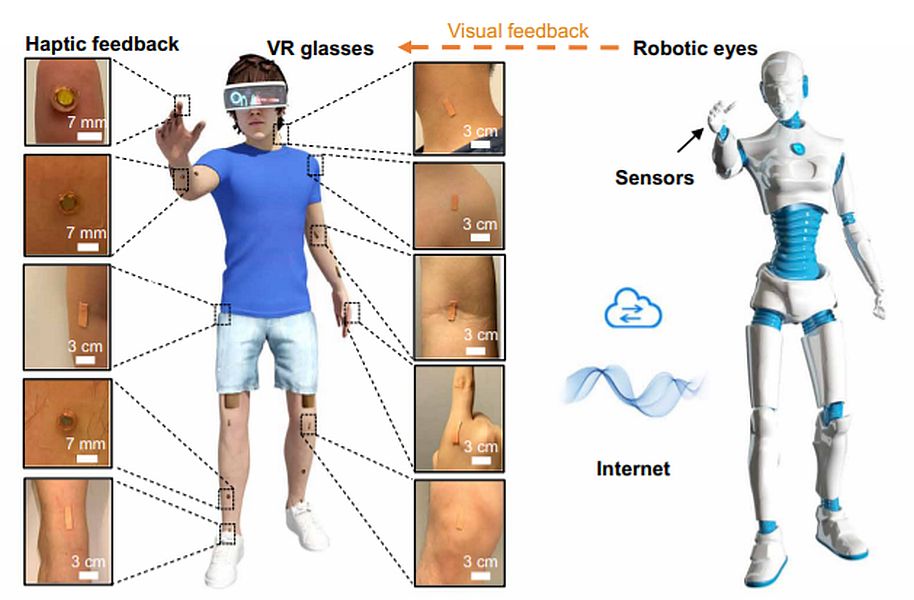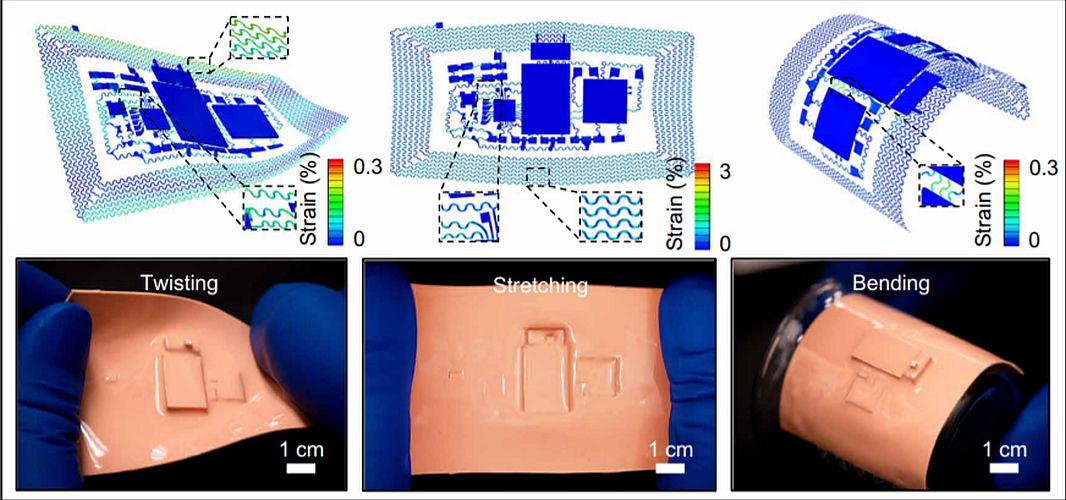
To control a remote robot via electromechanical devices, require the operator to wear huge and at times bulky gear. To make things easier, researchers from Hong Kong and China have fabricated a flexible skin patch, which has an ability to provide haptic feedback. Now not only the user can receive feedback from another (human) user but also from a robot to be more specific, haptic feedback from remotely controlled robot.
Although there are already robots which are controlled remotely by human operator but the researchers note that majority of such systems are huge and at time most difficult to control. Additionally, there is no feedback from machines except than a video stream.
Skin-integrated electronics
To make these gigantic things portable and developing a more user-friendly system in mind, researchers sought to fabricate the flexible electronic skin. The patch when applied to the skin of a human operator is capable of detecting not only movements but also stress elements such as twisting and turning of the co-related machine.
To control the entire haptic feedback, the electronic skin consists of:
- Sensors for analysing information
- Wireless transmitters for conveying/transporting the read data
- Small, vibrating magnets for helping with haptic feedback via Bluetooth
- Wireless Fidelity (Wi-Fi), and
- Internet

Not one but the patches are placed in groups on the skin of an operator. To get the optimum results, the blotches are applied on folds, such as the front of the arm over the elbow.
Sensors consist of wires in zigzag manner. As patch is bent, these wires are pulled thus shedding information about body movement, that is, arm (at elbow) is bent or the position is straight.
Operator can receive feedback from machine
Entire cumulative data from the patches allow an operator to have an overview of machine’s movement without having to wear the huge gear or robotic exoskeleton.
This is just one side of the story. Similar patch can be applied to the robot so that the operator can receive feedback. For instance, the operator can feel the roughness of an object held by the machine and its stress movements. The tiny vibrating magnets performs the required haptic feedback.

Takeaway
Intelligent robotics is the future. Also, it is one of the most sought-after tools to prevent the spread of infectious diseases and noncontact collection of bio samples.
Tech behind the touch displays and remote control proves that Human-machine interfaces (HMIs) are here to stay and enhancement is a way to move forward. Additionally, portable HMIs will extend our limitations while conducting complicated tasks, which is otherwise hamper due to bulky, rigid, and expensive machines.
More information: Yiming Liu et al, Electronic skin as wireless human-machine interfaces for robotic VR, Science Advances (2022). DOI: 10.1126/sciadv.abl6700



